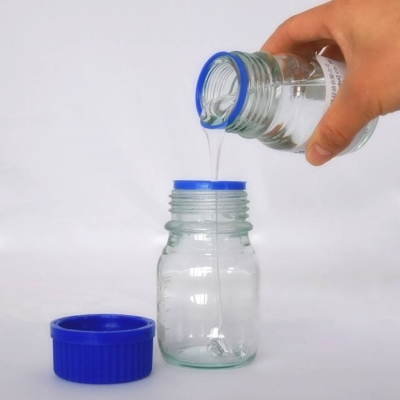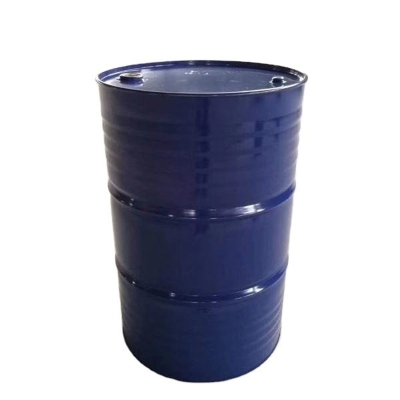-
Categories
-
Pharmaceutical Intermediates
-
Active Pharmaceutical Ingredients
-
Food Additives
- Industrial Coatings
- Agrochemicals
- Dyes and Pigments
- Surfactant
- Flavors and Fragrances
- Chemical Reagents
- Catalyst and Auxiliary
- Natural Products
- Inorganic Chemistry
-
Organic Chemistry
-
Biochemical Engineering
- Analytical Chemistry
- Cosmetic Ingredient
-
Pharmaceutical Intermediates
Promotion
ECHEMI Mall
Wholesale
Weekly Price
Exhibition
News
-
Trade Service
On September 28, it was learned that Jiangsu Xiangying New Energy Technology Co.
, Ltd.
has made a breakthrough in the research and development of sodium-ion battery layered oxide cathode materials, and has achieved large-scale production of 3,000 tons / year, and large-scale supply
.
This marks the next city
for the industrialization of cathode materials for sodium-ion batteries in China.
Gong Liming, chief engineer of Jiangsu Xiangying, said in an interview with reporters that Jiangsu Xiangying 3,000 tons / year sodium ion battery cathode material was put into production on September 1, and large-scale supply was achieved in mid-September, and the current shipment has reached 10 tons
.
"We have delivered samples and shipments to 130 companies, and most of the customers are in the pilot stage
.
Judging from the current feedback, our cathode material is relatively excellent in key properties such as processing performance and cycle performance, and the cost performance is relatively high
.
Gong Liming introduced
.
The sodium-ion battery mainly includes five parts
: cathode material, negative electrode material, electrolyte, current collector and diaphragm.
Among them, the positive and negative electrode materials affect the energy density, power density, cycle life, safety and other key performance indicators of the sodium-ion battery, which is crucial
to the performance of the battery.
At present, the mainstream sodium ion battery cathode material is divided into layered metal oxides, polyanionic compounds and Prussian blue compound systems
.
Among them, the layered metal oxide has excellent comprehensive performance and is currently a relatively mainstream cathode material
.
Gong Liming said that the research and development and application of layered oxide cathode materials are difficult, including high requirements for the use of environmental humidity and high requirements for adaptability to electrolytes, which restricts the development of
industrialization.
In this regard, Jiangsu Xiangying has broken through a number of technical bottlenecks
in the industrialization of transition metal oxides after long-term research and development.
"Environmental humidity requirements are important indicators
for laminated oxide materials for sodium-ion batteries.
When using sodium-ion battery materials, in the process of feeding, mixing and placing the pole pieces, as well as before the negative electrode pieces are shelled, it is necessary to strictly control the humidity and moisture, otherwise there will be problems of
low gram capacity and poor cycle performance.
To this end, we reduce the generation of new surfaces through a single crystal structure, inhibit the exchange of protons and bulk sodium ions through special coating of the surface, and increase the environmental relative humidity requirements from no more than 2% of the conventional sodium ion battery layered oxide cathode material to about
15%.
Gong Liming said
.
At present, the residual sodium hydroxide of the sodium ion battery cathode material of Jiangsu Xiangying is stable at about 0.
05%, and the research and development team is inhibiting the dissolution of somatic sodium ions in the body phase through doping, further reducing the sensitivity of the material to humidity and reducing the pH value of the material; By passivating the surface of the material, the adaptability of the material to the electrolyte is
improved.
Due to the relative scarcity and uneven distribution of lithium resources, the development potential of sodium-ion battery technology has gradually emerged
.
The research report released by Soochow Securities predicts that the sodium-ion battery technology and material system is expected to be basically finalized by the end of this year; 2023 is the first year of industrialization, and small batch shipments will be realized; Achieve mass production in 2024, and the scale is expected to reach 30GWh; In 2025, the global demand for sodium-ion batteries will exceed 100GWh
.
Gong Liming said that due to the continuous acceleration of the industrialization of sodium-ion batteries, Jiangsu Xiangying plans to increase the production capacity of cathode materials to 15,000 tons / year next year, and will increase to 40,000 tons / year in
the future.
In addition, Jiangsu Xiangying will also focus on improving the high temperature cycle performance, flatulence performance, as well as high-gram capacity materials and cost-effective materials
.







